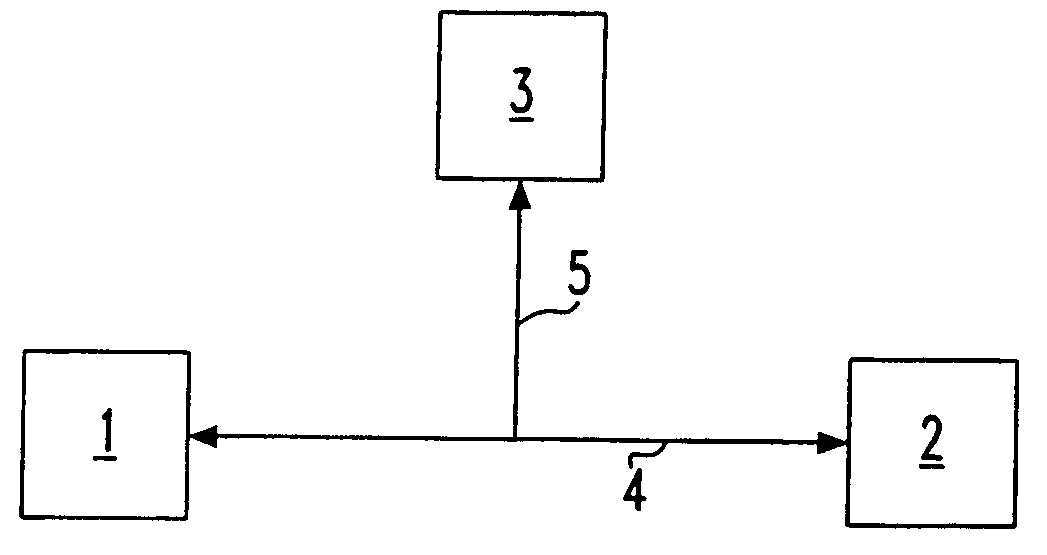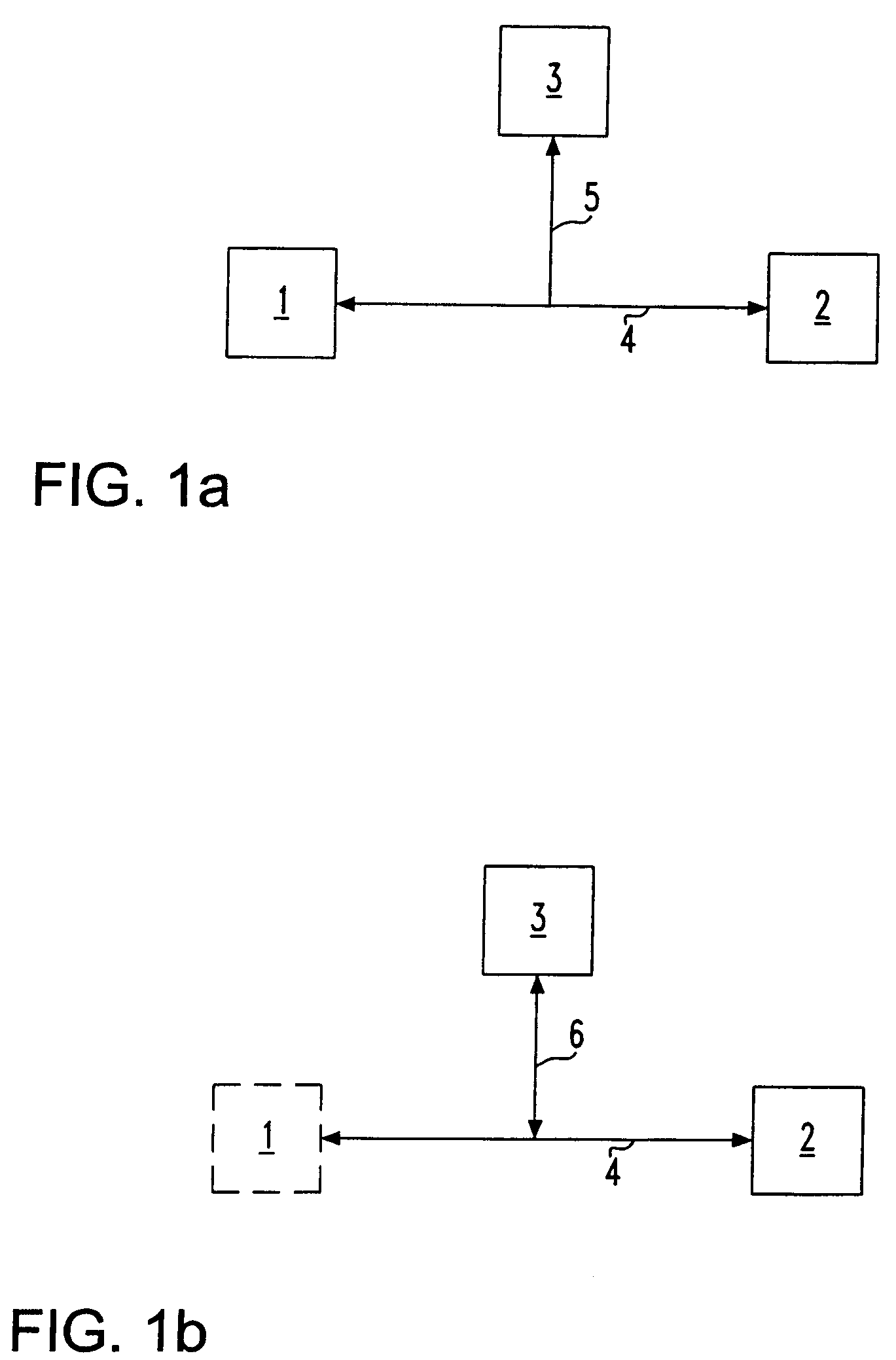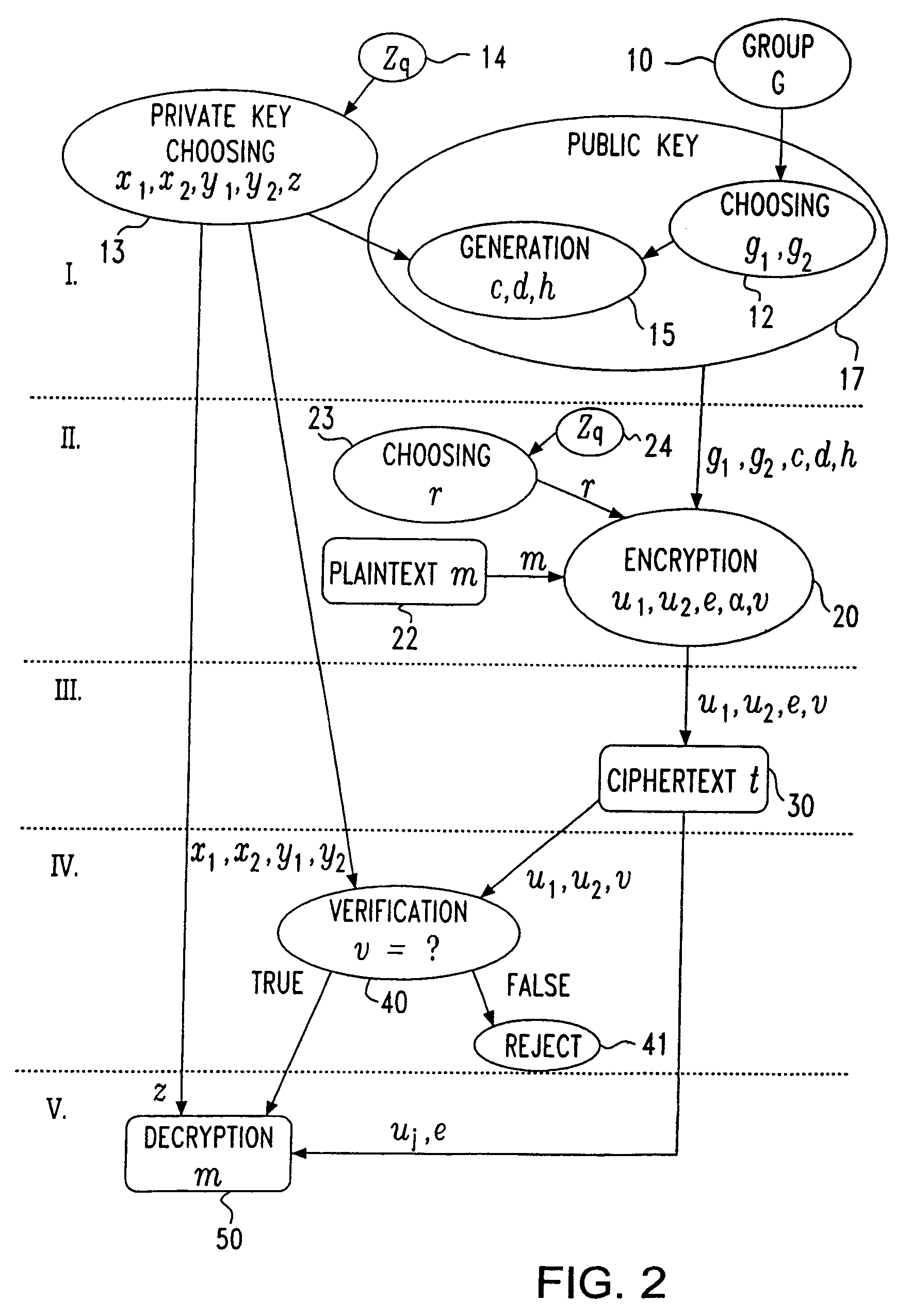Practical non-malleable public-key cryptosystem
a cryptosystem and public key technology, applied in the field of secure communications, can solve the problems of difficult derivation of private key from public key as possible, unsuitable for everyone, and restricted information sent to an intended receiver, so as to improve the security of encrypted data or information
- Summary
- Abstract
- Description
- Claims
- Application Information
AI Technical Summary
Benefits of technology
Problems solved by technology
Method used
Image
Examples
Embodiment Construction
[0039]In the following, the basic scheme according to the present invention is described in detail. Further, some implementation details and possible variations of the basic encryption scheme are addressed. FIG. 1a and FIG. 1b explain in a short way the problem of an attack.
[0040]FIG. 1a shows a typical scenario for an attack. Generally, FIG. 1a depicts a user's first device 1 and a second device 2 which is a server or a replying device, also referred to as “decryption oracle”. The first device 1, which is a computer, is connected via an insecure channel 4, e.g. the Internet, to the second device 2. An adversary 3, which is here an attacker, has access to the insecure channel 4. The communication between the first device 1 and the second device 2 takes place in an encrypted manner, whereby a public-key cryptosystem is used. Hence, the user's first device 1 and the second device 2 process cryptographic messages. The adversary 3 can eavesdrop the insecure channel 4 by an eavesdropping...
PUM
 Login to View More
Login to View More Abstract
Description
Claims
Application Information
 Login to View More
Login to View More - R&D
- Intellectual Property
- Life Sciences
- Materials
- Tech Scout
- Unparalleled Data Quality
- Higher Quality Content
- 60% Fewer Hallucinations
Browse by: Latest US Patents, China's latest patents, Technical Efficacy Thesaurus, Application Domain, Technology Topic, Popular Technical Reports.
© 2025 PatSnap. All rights reserved.Legal|Privacy policy|Modern Slavery Act Transparency Statement|Sitemap|About US| Contact US: help@patsnap.com



